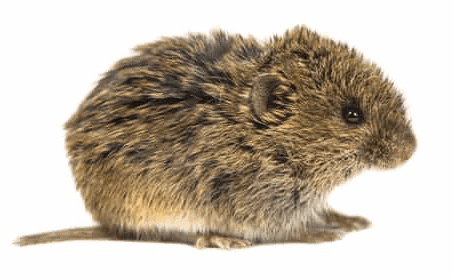Reliable Bug Control Solutions for Vole Infestations

In the world of pest control, vole infestations present a distinct challenge that requires a critical technique. By delving into the details of vole actions and discovering an array of control methods, an extensive pest administration plan customized to these evasive creatures can be crafted. From natural repellents to cutting-edge capturing techniques, the collection versus vole infestations is multi-faceted.
Understanding Vole Actions
Voles, little rodents typically found in yards and fields, exhibit unique behavior patterns that are crucial to recognize when implementing parasite control measures - vole control service. These creatures are prolific miners, producing a comprehensive network of passages underground where they nest, store food, and look for shelter from killers and inclement weather condition. Voles are herbivores and primarily feed upon yards, bulbs, origins, and seeds, making yards and fields excellent habitats for them
One secret behavior of voles is their rapid price of recreation. Females can offer birth to multiple trashes each year, with trash dimensions varying from three to six pups. This high reproductive ability allows vole populations to promptly multiply, resulting in problems if left unchecked.
Comprehending vole actions also involves recognizing their patterns of motion and foraging. Voles develop surface runways in grassy locations as they take a trip in between their burrows and food resources. By observing these runways and the places of burrow entrances, pest control professionals can recognize high-traffic locations and purposefully place traps or deterrents to efficiently handle vole populaces.
All-natural Repellents and Deterrents
With an understanding of vole behavior as a foundation, checking out all-natural repellents and deterrents comes to be crucial in properly handling vole infestations in fields and yards. Furthermore, incorporating predator urine, such as that of prairie wolves or foxes, around the garden border can develop a natural obstacle that signifies risk to voles, encouraging them to remain away.
Additionally, making use of castor oil-based repellents can interrupt vole passages as they discover the scent and taste undesirable, prompting them to move. Mulching with products like gravel, lava rocks, or crude sand can also prevent voles as they dislike digging via these rough compounds. Implementing a combination of these all-natural repellents and deterrents can help successfully handle vole populaces in a non-toxic and sustainable manner, securing plants and gardens from vole damage.
Capturing Strategies for Voles

Break catches are developed to eliminate voles instantly upon activation. These traps ought to be positioned in locations where voles are understood to travel, such as close to burrow entries or along their paths. It is vital to check snap traps regularly and take care of any type of recorded voles quickly to ensure the efficiency of the capturing process.
Live catches are a much more gentle option for those who desire to capture voles without damaging them. Once a vole is caught in a real-time trap, it can be safely transported to a different place and launched unharmed. Live catches need to be checked often to stop anxiety or injury to the captured voles.
When setting catches for voles, it is crucial to consider their actions and practices to raise the likelihood of success (vole control utah). By utilizing the proper capturing methods, vole populations can be successfully managed, minimizing the damage they trigger to agricultural and yard locations
Applying Physical Barriers
To further fortify the defense against vole problems, the critical execution of physical barriers emerges as a proactive action to guard farming and garden areas. Physical obstacles such as cable mesh, equipment towel, or fencings can be installed below ground to protect against voles from delving into areas or yards.
Additionally, making use of tree guards or trunk covers made from metal or plastic can secure tree trunks from vole damages during cold weather when various other food sources are limited. These guards ought to extend over the expected snow line to avoid voles from gnawing on the bark. Normal evaluation and maintenance of these obstacles are important to ensure their proceeded effectiveness in hindering vole invasions and protecting important crops and plants.
Integrated Bug Management Approaches
Incorporating numerous pest control techniques, including biological controls, habitat control, and surveillance, creates the basis of effective Integrated Pest Administration approaches for resolving vole infestations. Biological controls involve introducing natural predators of voles, such as serpents Bonuses or owls, to the afflicted location to aid reduce vole populations.
Conclusion
Finally, efficient bug control options for vole problems entail recognizing vole actions, utilizing natural repellents and deterrents, implementing trapping techniques, and setting up physical barriers. Integrated pest management strategies can also be employed to address vole infestations comprehensively. By incorporating these methods, residential property owners can successfully mitigate and take care of vole populaces without the requirement for vole control service excessive pesticide use.
With an understanding of vole actions as a structure, checking out natural repellents and deterrents comes to be necessary in successfully managing vole problems in areas and gardens. Implementing a mix of these natural repellents and deterrents can help effectively take care of vole populations in a sustainable and safe way, safeguarding plants and gardens from vole damages.
Integrating numerous insect control techniques, including organic controls, habitat adjustment, and monitoring, creates the basis of efficient Integrated Pest Administration strategies for addressing vole invasions. Organic controls include presenting all-natural predators of voles, such as snakes or owls, to the afflicted location to assist lower vole populations (vole control utah county).In conclusion, reliable pest control options for vole infestations include understanding vole habits, making use of natural check these guys out repellents and deterrents, carrying out trapping methods, and establishing up physical obstacles